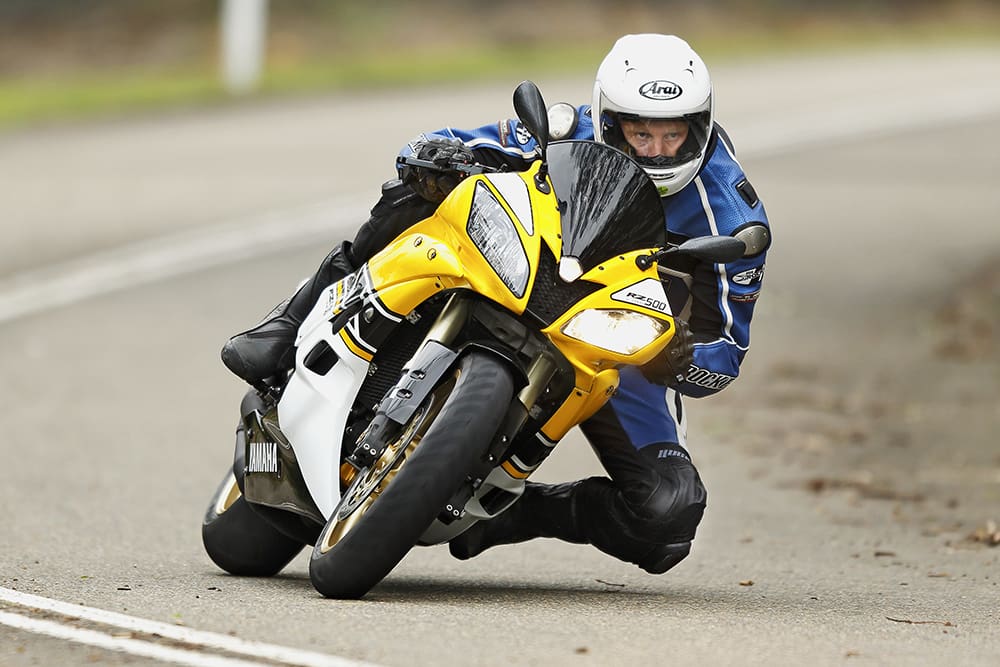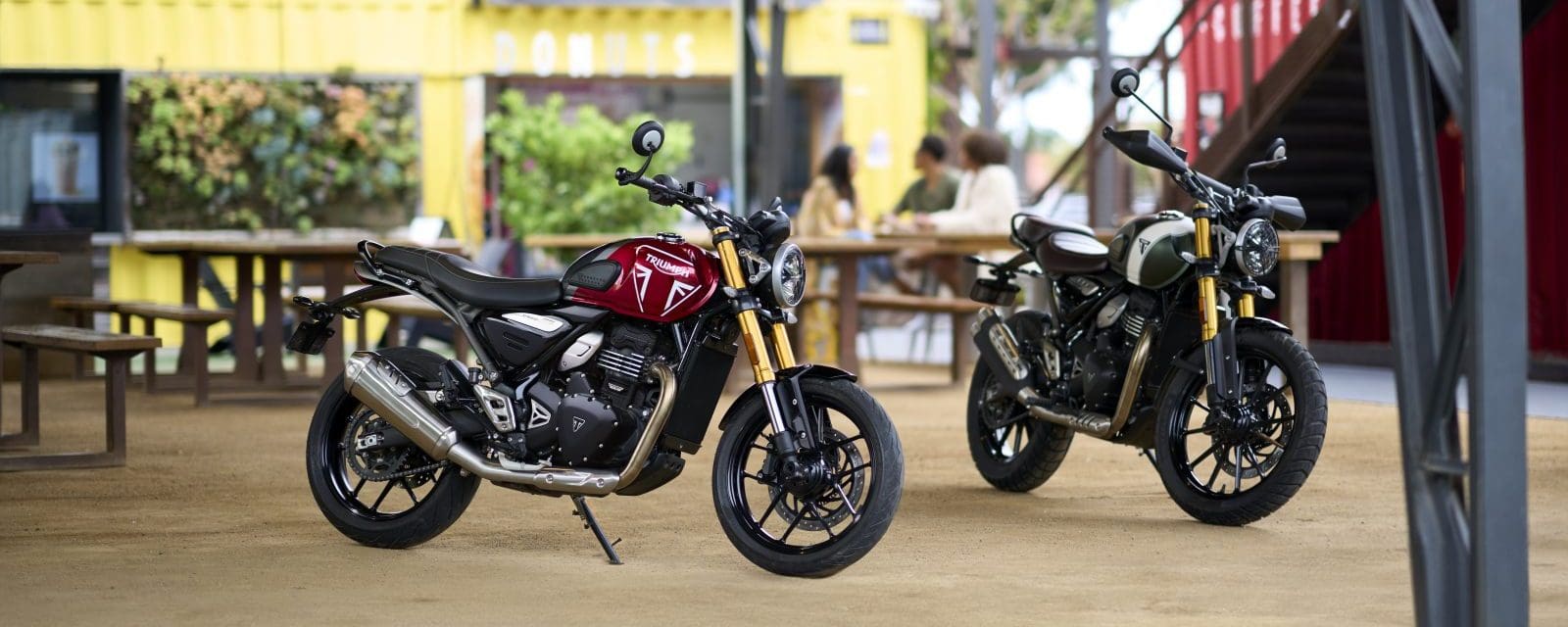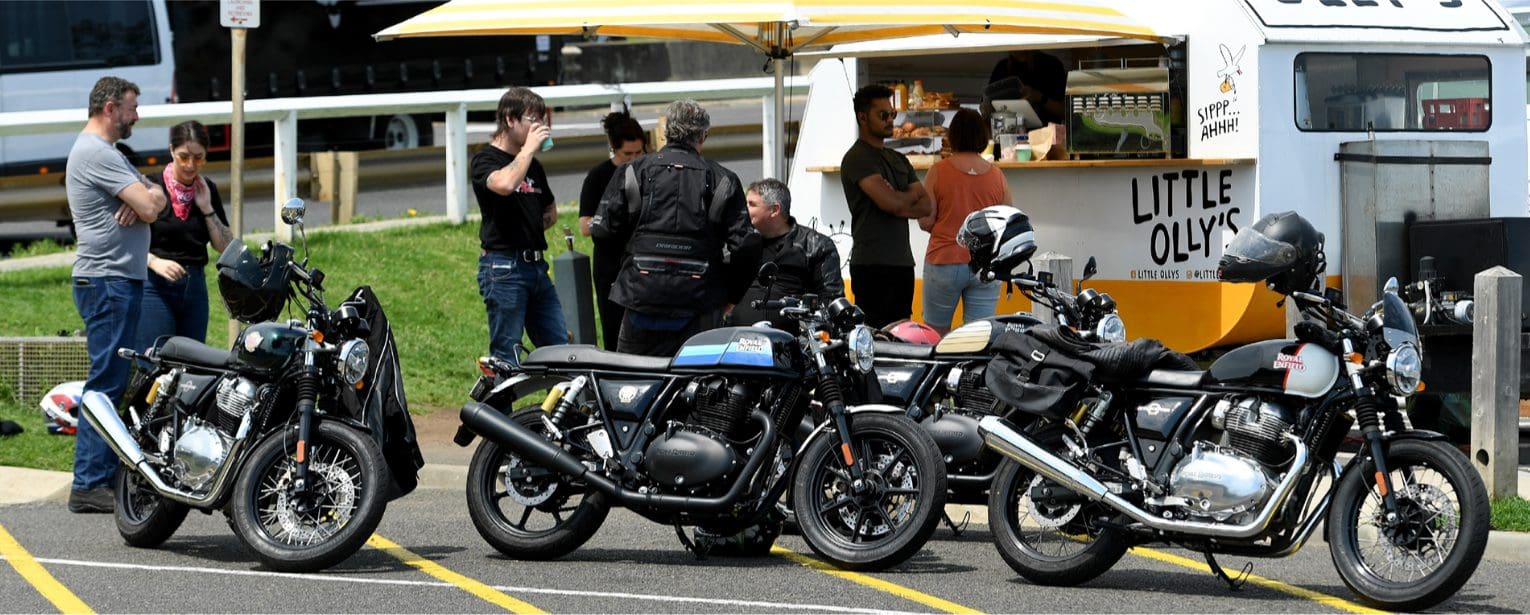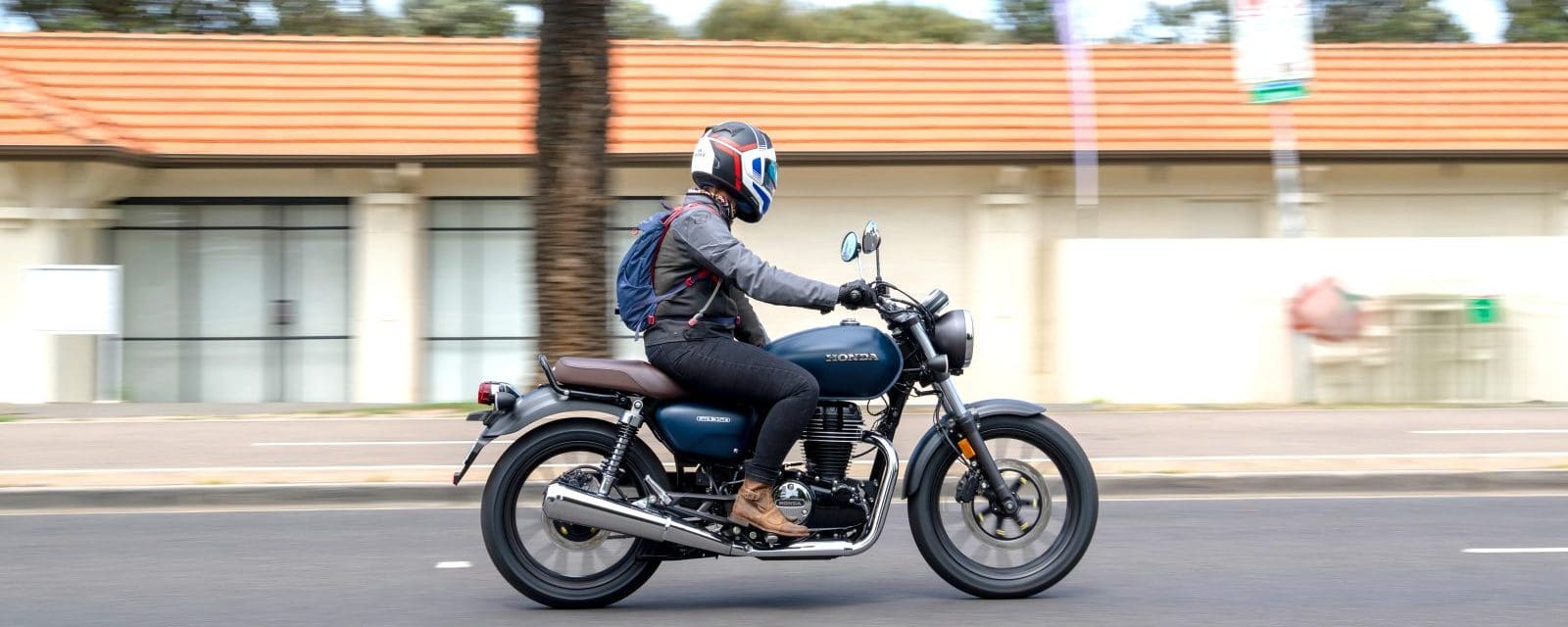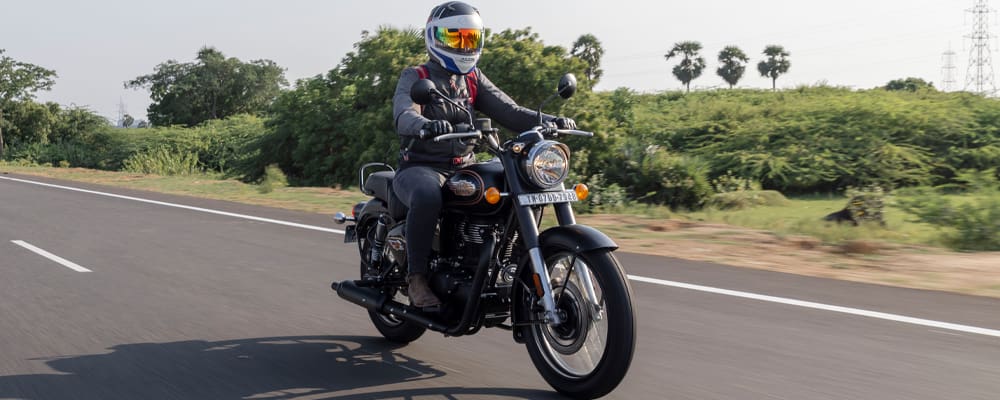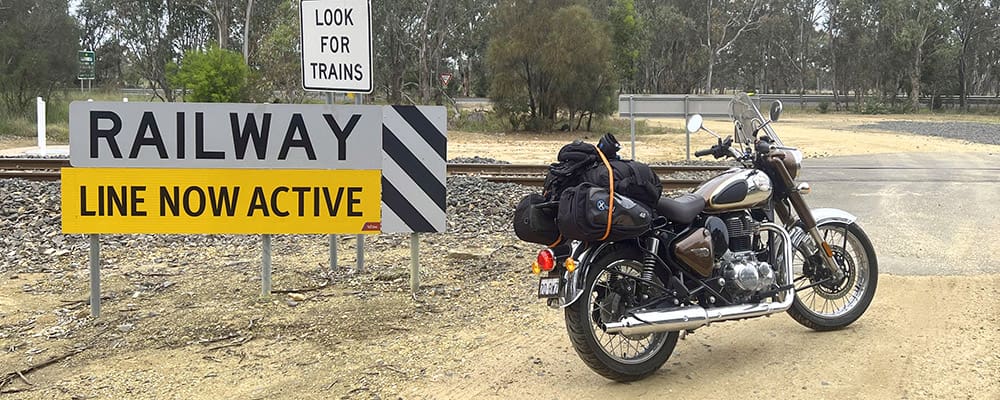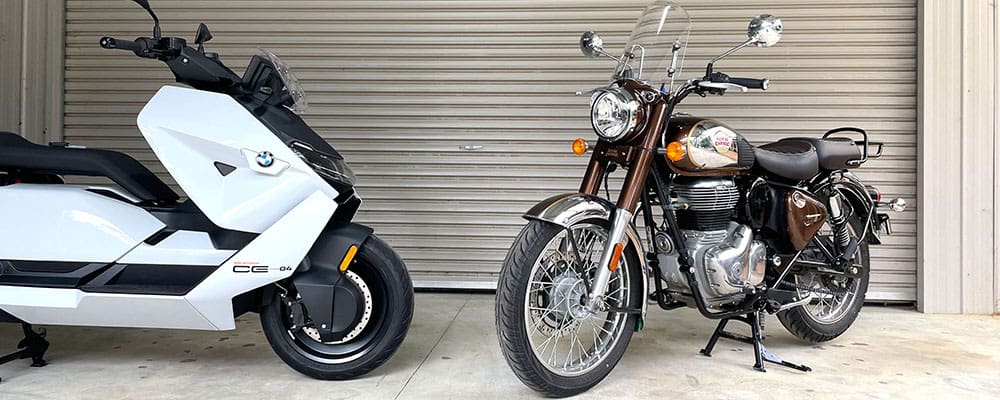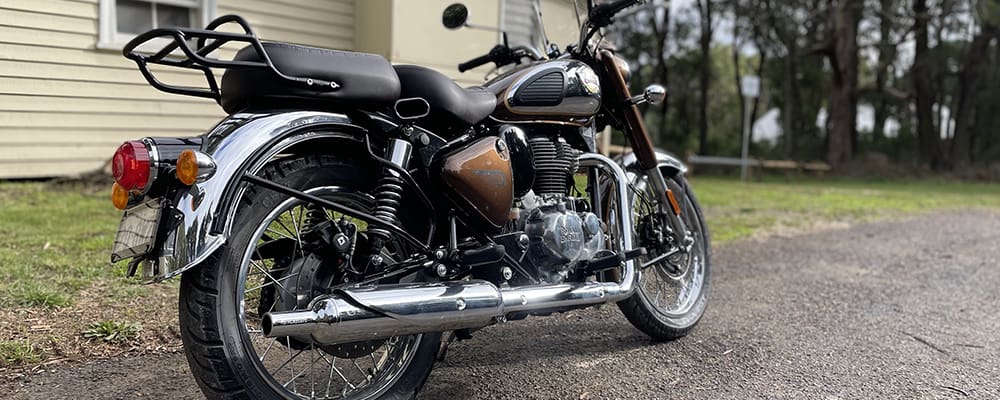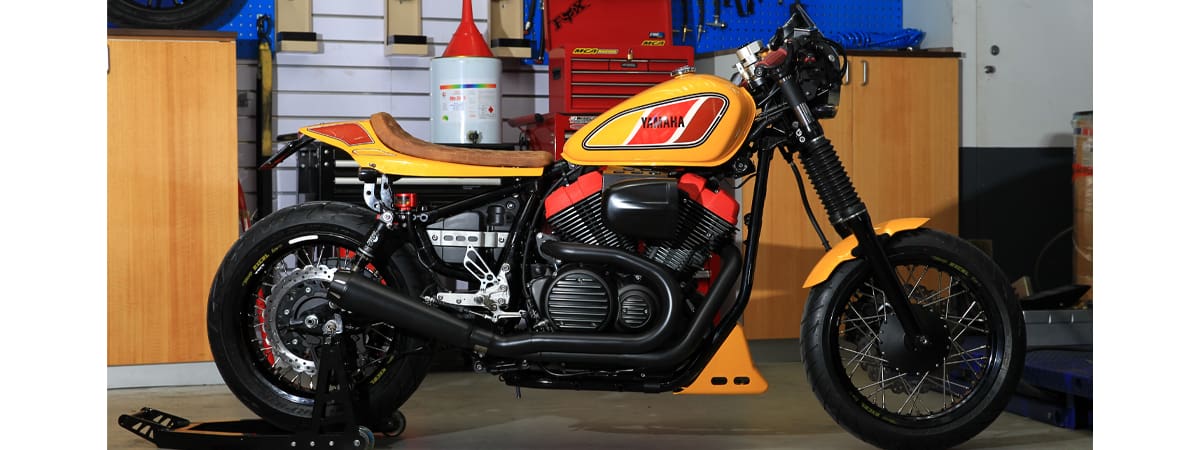There is a school of thought that says less is more, and the very best compliment after building your own bike could be it’s not immediately obvious what has been altered. This neatly crafted blend of old and new two-stroke R6 Yamaha is just one such example of that thinking. You might think no one could miss four exhausts poking out the back, completing what at first glance appears to be a fairly stock 2006 R6, but you’d be wrong. This bike has such an air of togetherness that when Editor Sam first saw it in a bike-road servo, it was almost missed.
Thankfully, it wasn’t. In fact, it made such an impression that after a quick snap and exchanging phone numbers, half an office planning meeting reTWO-directed itself into a two-stroke reminiscence love-in; Yamaha should make these again! Too many people, a whole generation, have missed out on the joy of a well-sorted two-stroke, we decided. Is it all ancient history or could technology and a change in market focus bring them back?
If it was October ’83 again you might see the press release for the new-for-1984 RZ500. Its text glows with corporate pride. Yamaha described itself as the world leader of production sporting machines. Given the level of success of the preceding TZ and RD, that’s not so bold a claim. It may have got slightly carried away, though; the then widely anticipated RZ500 was billed as the closest road-going grand prix replica a manufacturer had ever produced. It almost implies the six grands prix Kenny Roberts won that year were on this machine. How annoyed must Yamaha have been that Spencer’s 144 points pipped Roberts’ 142.
What is still a valid theme is packaging. The monocross system Yamaha delightedly claimed brought precise, predictable handling is a familiar single shock absorber. The difference is it’s horizontal, lying beneath the engine. And in this case connected to an ’07 YZF-R6 swingarm, specially modified by a California-based former NASA fabricator member of the RZRD500.com forum. No doubt the Öhlins YA438 shock absorber and its elegant bracket for the remote reservoir atop the forward cylinders is worlds apart from the components the bike arrived with.
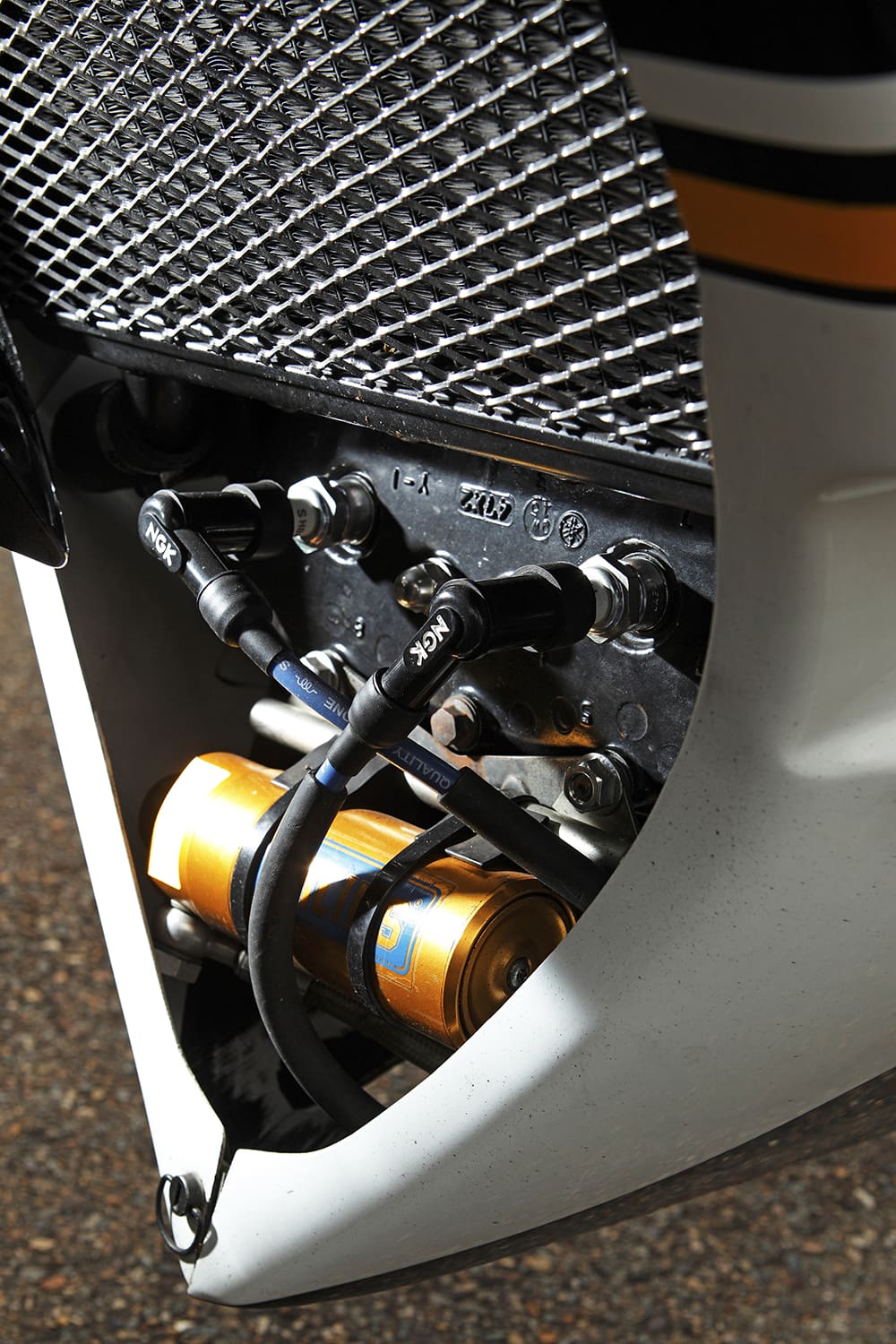
Introducing high-quality suspension isn’t the only thing required to bring an older chassis more into line with the current styling; a ride-height adjuster also resides next to the forward cylinder’s exhaust pipes. It’s responsible for increasing the ride height to return the bike’s attitude, once a matching R6 wheel with corresponding 180/55-17 was fitted. Things don’t completely match up with a modern machine, although this was never expected. Bike-owner Adrian always intended to keep the standard frame, primarily to avoid registration problems – that and there is already enough work in the details of turning out a high-quality special. The modified R6 swingarm (the shock tunnel is plated in, and has two triangular plates to pick up the rising-rate fulcrum) sees the wheelbase lengthened to 1420mm. Originally the RZ was noteworthy for its short wheelbase of 1375mm.
The front end feels familiar. Due to the ravages of time all the switchgear has been replaced with R1 items. Although a fiddly task, it’s helped by a certain familiarity. Wire colour codes have been retained for a long time. So comprehensive is the feeling of a new model, my thumb makes for the start button twice. The new switches are on raised bars that in turn connect to a German Performance Products upper triple clamp. This mates to the rest of a re-sprung ’05 YZF-R1 front end, left over from a previous project. So not only has a great bike been produced, the garage got a bit tidier, too.
Such a project bike can arrive for many different reasons. Adrian had several variations of RDs when living in Northern Ireland and England in the 80s. He never had a 500, though – that took the completion of a 350LC. The hoist in the garage was never going to remain empty for long – eBay to the rescue. A local guy selling his wife’s tidy, if fairly worn-out, bike fixed that. The decision of what to do with it was easy – Adrian’s intention was always to see how the bike would look if updated by the factory. Still, the purchase of a set of bodywork was a gamble. Until it arrived, he was never certain it would fit at all, let alone so well.
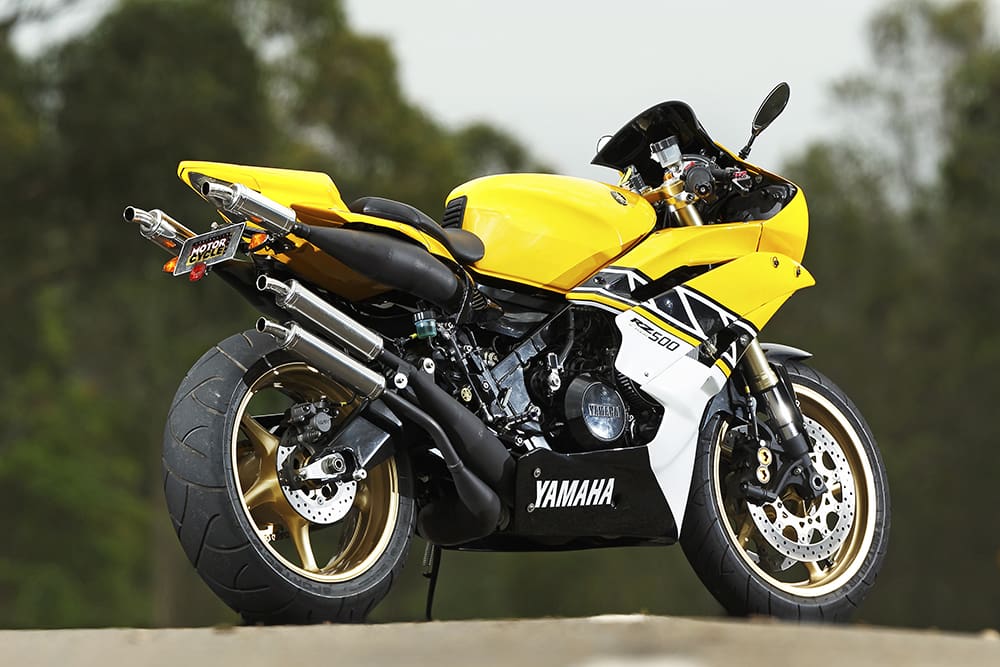
And that fit is perhaps the most surprising thing about this. Not that a standard 23-litre RZ tank complements bodywork 22 years newer, although it does. But that four-stroke design, and the spatial efficiency of modern machines has progressed so much. I had expected the bodywork to dwarf the smaller two-stroke, and this is the thing: the two-stroke isn’t smaller. Both bikes are effectively the same size, despite fairings containing vastly different engines.
The engine here is mostly standard. One of the original reasons for tearing it down was new crank seals and this is only part of a long list of refurbishment. The heavier clutch springs needed to contain the power increase is the only bit that can be uncomfortable. Other new parts inside the fully rebuilt engine are pistons inside rebored barrels, rods and both cranks are new.
Both cranks? The engine is a curiosity now. On the spec sheet it’s a 50° V4, but two parallel twins angled next to one another and geared together with a central balancer shaft is perhaps a better description. You can’t tell it’s a four-cylinder; it sounds just like the smaller variants, just deeper. All the internal shafts do cause one quirk – you have to time the two cranks to the balancer, vaguely like cam timing a four-stroke.
Despite Adrian’s comment of it just being metal and plastic, I’m sure the three years of spare time getting it renovated would be remembered had I thrown it up the road. That and the valuable assistance relatives Joe and Ann-Marie Weir have contributed to the project would have to be re-done. And there would need to be more visits to Wyong to see Dudley. Every project needs some outside assistance, and if you’re going to use someone, use someone good. Dudley’s Performance Centre remembered RZs well having worked on them when new within a Marlboro Yamaha role. Adrian was full of praise here.
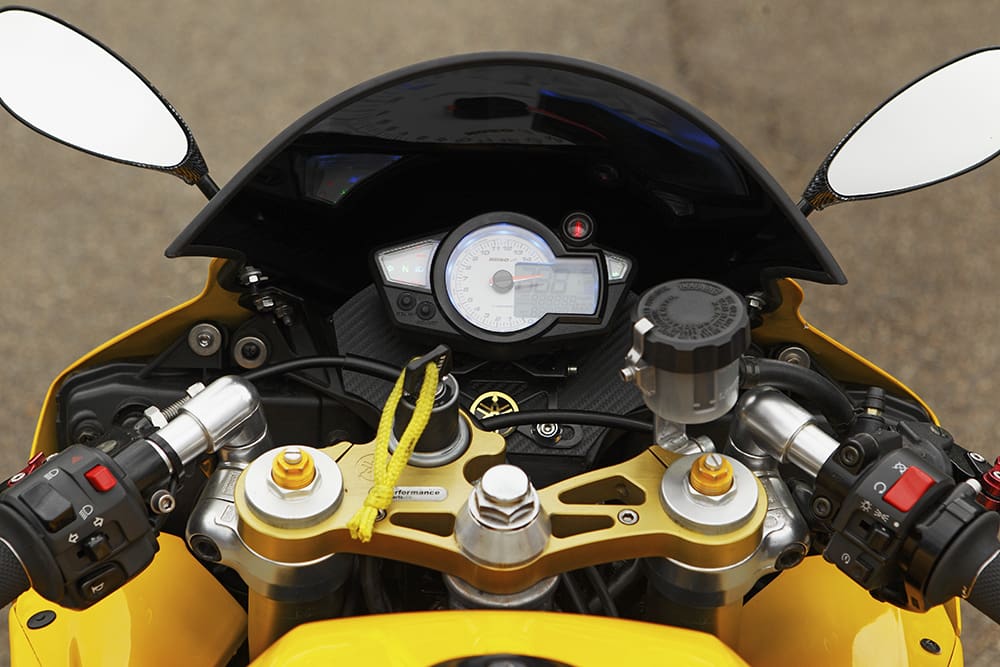
So how is it to ride? I followed first, admiring how well-behaved it was; barring racing extremes, only badly set up two-strokes need be revved to keep them alive. And drinking in the smell, most under-30s will think this is madness. Kicking it into life is easy – there’s little resistance beneath a compression ratio of 6.4:1 so after one, maybe two kicks, it rumbles into life. After warming, I’m away and understand the one problem of the bike: it wants to go. It’s not that it won’t behave itself, far from it, just that there is a constant temptation to delve past the 5800rpm where it works best.
It could be faster. Power is a little over 90bhp (67kW) but Adrian wanted something that worked and retained the fun factor, so performance upgrades are limited. Those exquisite right side-biased GP-styled expansion chambers are the mark and sound of genius, and Jim Lomas is the man responsible. They are matched to Mikuni TM28 flat-slide carburettors, up from 26mm. Once again showing a sound approach to bike building they were chosen for value for money, and gaining air-screw adjustment – an essential function the originals never had.
So revs up to a few thousand, a small amount of clutch slip and we’re away. A moment’s hesitancy before things change from 5000rpm. It’s not a light switch change; the original igniter box is in service and this dictates standard power valve actuation. A Czech Ignitech box were returned to service later, and then power valves and ignition advance could be adjusted. One sampling of that addictive power and into second. Open the throttle and snick third. Tipping into a longer blind left is smooth and effortless. Positioning is thankfully easy as there is a lot of debris in the middle of the lane and I can’t stray past the double whites. A few passes later speed is building, knee is skimming ground, smile is firmly on face.
Slowing down demonstrates the little bits of progress you don’t see in increments. It’s nothing to do with brakes, it’s the gearbox. Modern feet need to give it a moment to complete a change before starting the next. Decelerating into a slow hairpin feels dictated by the gearbox, as there is no point exiting in too tall a gear. This is a comment on times passing, not a criticism of the builder. But all up, this is a damned fine effort in speculating what Yamaha could do with all those years of experience since the RZ500 was first released.
